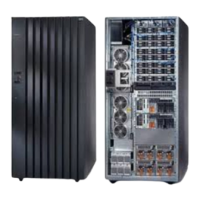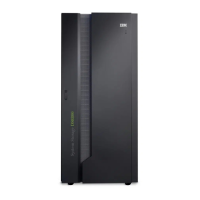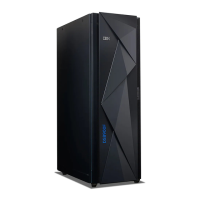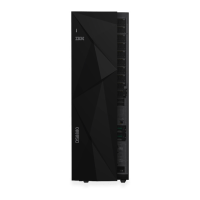Chapter 7. Storage system logical partition overview
A storage system logical partition (LPAR) allows the division of a single server into
two completely independent virtual storage systems.
A logical partition uses hardware and firmware to logically allocate the resources
between partitions.
The storage system logical partition function is currently supported on the DS8300
Model 9A2/9B2. It allows you to have two virtual storage systems in one physical
machine. Each storage system logical partition can run different levels of licensed
machine code. Typically, the different machine code levels of a common release are
compatible. However, certain levels of licensed machine code might not be
compatible if the later licensed machine code level contains substantial
enhancements. If your levels of licensed machine code are not compatible, you can
contact IBM support to request instructions for installing the two different licensed
machine code levels. In addition, if each logical partition runs a different level of
machine code, you can contact IBM support to request a code level upgrade on
either partition. Your requests will be evaluated and approved based on the
feasibility with your particular configuration.
The default resource allocation for processors, memory, and I/O slots in the two
storage system logical partitions on the DS8300 is divided into a fixed ratio of
50/50 percent. If variable partitions are required, the resource allocation for
processors and memory can be changed to 25/75 percent or 75/25 percent. See
“Variable logical partition implementation” on page 98 for more information.
Note: Each storage system logical partition can have 255 logical subsystems (LSSs)
with LSS IDs 0–254.
DS8300 LPAR implementation
The DS8300 Model 9A2/9B2 provides a split between the resources.
Each storage image uses the machine type/model number/serial number of the
DS8300 Model 9A2/9B2 base frame. The frame serial number ends with a 0. The
last character of the serial number is replaced by a number in the range one to
eight that uniquely identifies the DS8000 image. This character is a 1 or a 2,
because there are only two available storage images. The serial number
distinguishes between the storage images in the GUI and CLI. The serial number is
also used for licensing and the allocation of licenses between the storage images.
Figure 8 on page 98 illustrates the default DS8300 LPAR resource allocation.
© Copyright IBM Corp. 2004, 2008 97
|
|
|
|
|
|
|
|

